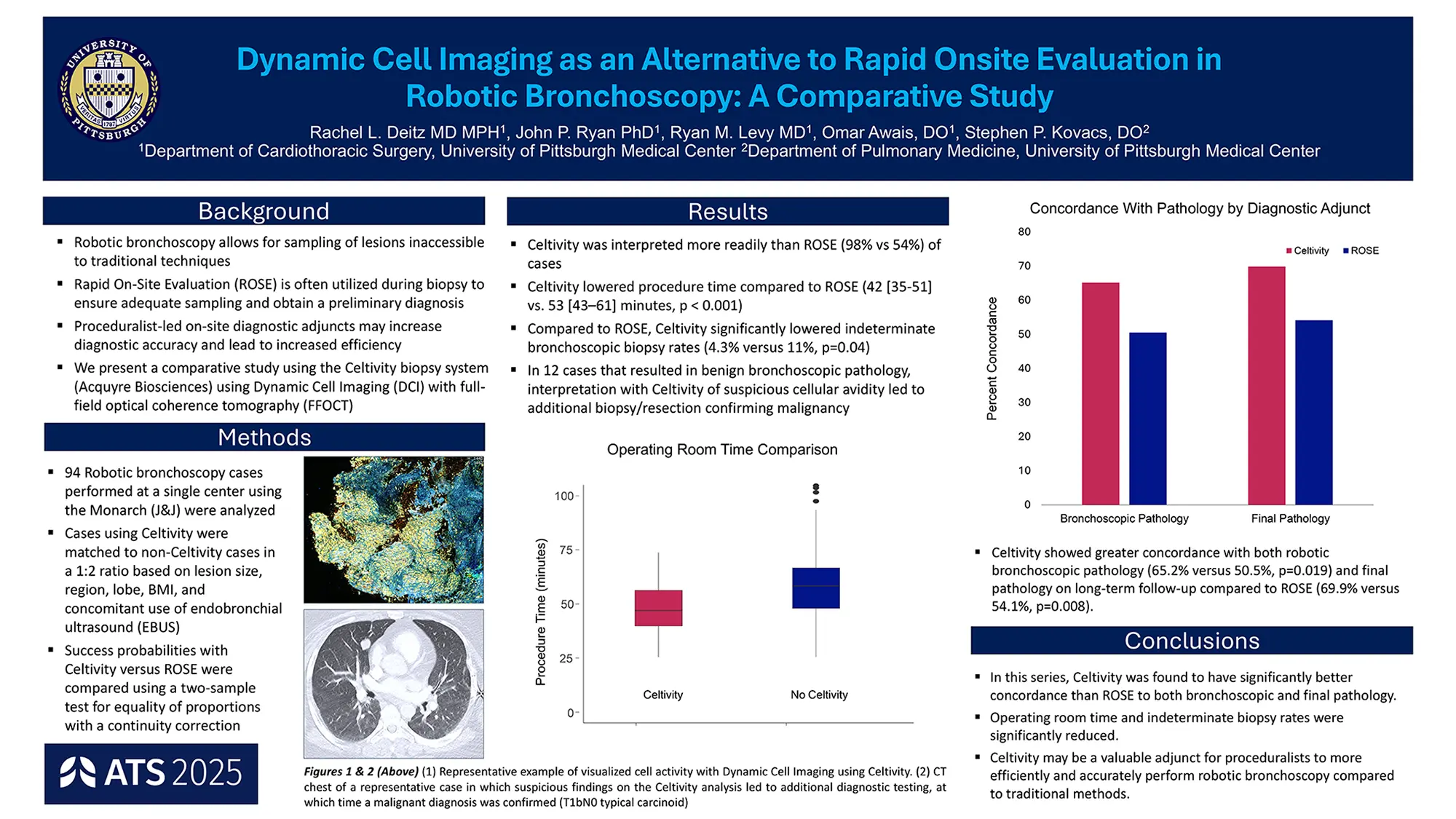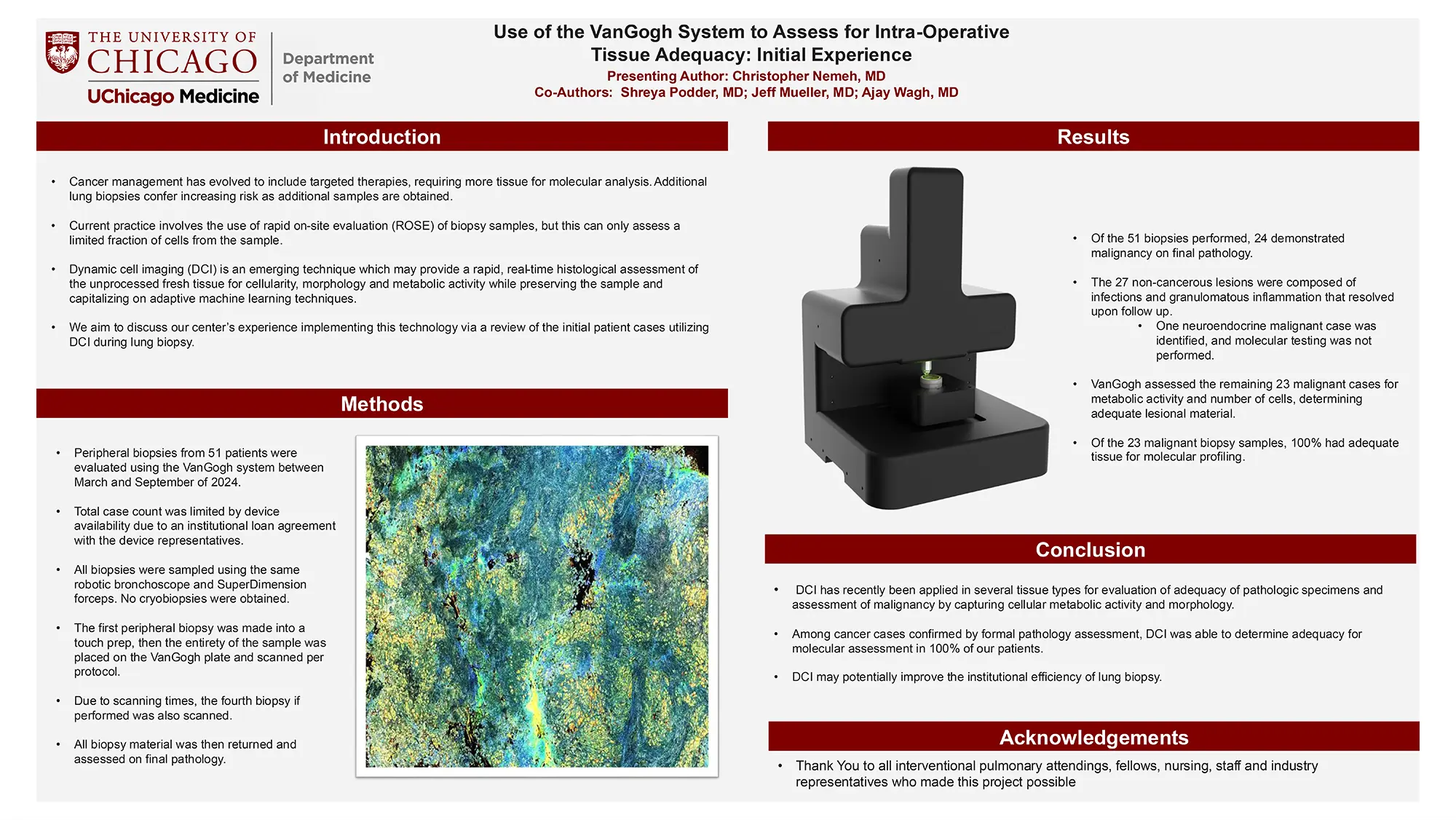Dynamic Cell Imaging as an Alternative to Rapid Onsite Evaluation in Robotic Bronchoscopy: A Comparative Study

Abstract
Background: Robotic bronchoscopy enables sampling of lesions unreachable by traditional techniques, often paired with rapid onsite evaluation (ROSE) for adequacy. However, ROSE is limited by partial sample assessment. Dynamic Cell Imaging (DCI) with full-field optical coherence tomography offers a proceduralist-led, real-time adjunct for improved diagnostic accuracy.
Methods: A single-center study analyzed 94 robotic bronchoscopy cases, comparing Celtivity (DCI) with ROSE. Cases were matched for lesion and patient characteristics. Key outcomes included procedure time, biopsy adequacy, and concordance with pathology.
Results: Celtivity was more readily interpreted (98% vs 54%), lowered median procedure time (42 vs 53 minutes), and reduced indeterminate biopsy rates (4.3% vs 11%) compared to ROSE. DCI showed greater concordance with both bronchoscopic (65.2% vs 50.5%) and final pathology (69.9% vs 54.1%).
Conclusions: Dynamic Cell Imaging with Celtivity significantly improves diagnostic concordance and workflow efficiency in robotic bronchoscopy, outperforming ROSE for sample adequacy and reducing procedure times .





